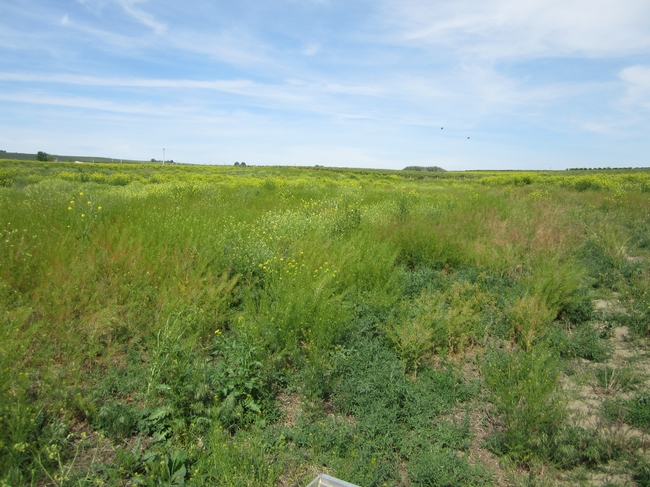As a commodity-based CE Advisor with a background in entomology, weed science is not a familiar subject to me, especially weed identification. In my experience, weeds were studied within entomology when the pest insect overwintered or fed on weeds, or when weeds were potential hosts of many insect-vectored diseases and served as disease reservoirs. Insects use weeds as an important resource, but this can help or harm agricultural crops. Many pest insects, especially the generalist feeders, spend the spring and winter on weeds before moving into agricultural crops. Many weeds also serve as hosts for diseases transmitted by insects, which is a large research area in agricultural entomology. On the other hand, weeds are also some of the first flowering plants for pollinators and harbor beneficial insect species. The relationship between insects and weeds changes depending on whether the pest insect is a specialist or generalist feeder (Capinera 2005). For example, do pest insects that love tomatoes and potatoes reproduce just as well on solanaceous weeds, like nightshades? Do weeds act as reservoirs of bacterial or viral diseases that insects could then carry into a nearby cash crop? For certain commodity systems, the answer is yes to both of these questions, but there are other systems not as well studied.
Weeds closely related to a specific crop, like nightshades to solanaceous crops, would likely harbor pest insects and should be eliminated to help reduce pest damage on the cash crop. Integrated pest management practices to combat pest insects and their relationships to weeds include crop rotation, reduced pesticide use, and managing weeds in non-cultivated areas near agricultural fields such as roadsides/ditches, perimeters of fields, etc. (Capinera 2005).
Taking insect-vectored diseases out of the equation, generalist insect plant feeders can find refuge in large groups of weeds while they wait for another food source. Lygus bugs which are very destructive to alfalfa seed and strawberries (among other crops) can usually be found in large numbers on mustard.
Beet leafhoppers, vectors of beet curly top virus (BCTV), spend the winter up in the foothills on weeds before moving down into the valley to feed on crops, and transmit BCTV while passing through tomato fields.
A comprehensive understanding of a target pest's life history, which may likely include weeds as food resources or reproductive hosts, is critical to developing IPM strategies to control both the weeds and the target pest species.
Capinera, J.L. 2005. “Relationships between insect pests and weeds: an evolutionary perspective”. Weed Science. 53(6): 892-901
